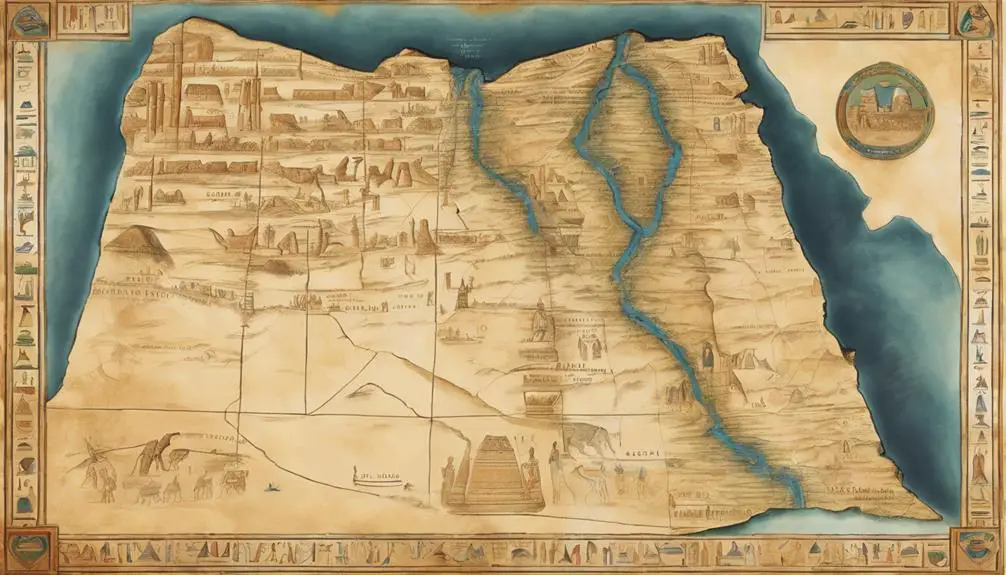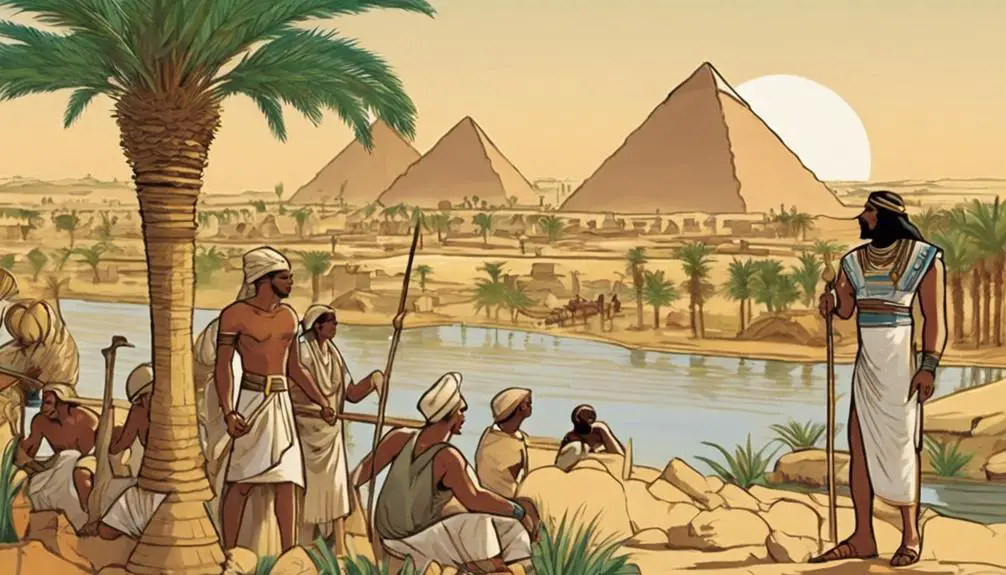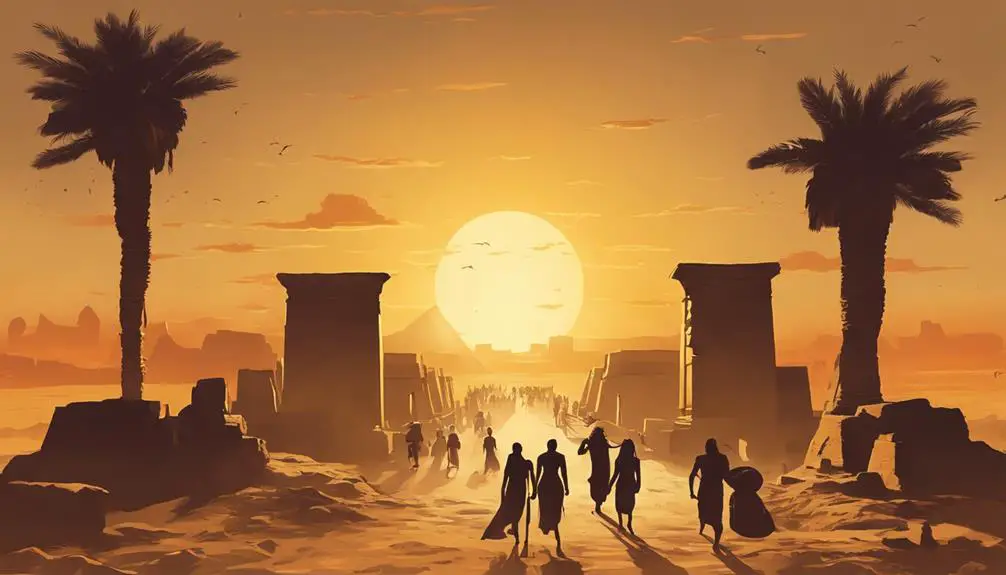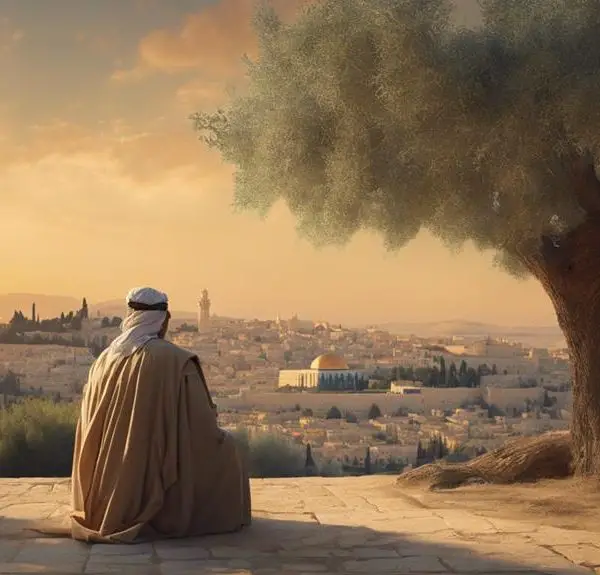Marvel at the mystery of Pathros, a biblical region rich in prophecy and history, and discover its untold influence on ancient narratives.

Pathros in the Bible
As you embark on a journey through the winding roads of biblical history, you'll find Pathros, a gem nestled within the vast landscapes of Egypt's narrative. This region, significant yet often overlooked, serves as a canvas depicting the complex relationship between the Israelites and their surroundings.
Through its historical context, biblical references, and prophetic significance, you'll uncover how Pathros and exile intertwine, shaping the course of events. The layers of modern interpretations await your exploration, promising insights that bridge ancient texts with contemporary understanding.
Let's unearth the stories hidden within Pathros, revealing how they echo through the annals of history and into our lives today.
Key Takeaways
- Pathros is a region of significant historical and strategic importance in ancient Egypt, mentioned in biblical texts.
- It serves as a cultural and spiritual bridge in biblical narratives, symbolizing refuge, conflict, and divine intervention.
- The symbolism of Pathros reflects themes of spiritual exile, wandering, and eventual restoration, deeply embedded in religious texts.
- Modern interdisciplinary studies on Pathros enhance our understanding of its multifaceted role in history and its spiritual significance in biblical prophecies.
Pathros Defined

Pathros, often referenced in biblical texts, denotes a region of ancient Egypt situated in the upper Nile valley. You'll find that the Pathros etymology is deeply rooted in the ancient Egyptian language, wherein it translates to 'the southland' or 'land of the south.' This name not only underscores its geographical location but also its cultural and political significance in ancient times. The upper Nile valley, known for its fertile lands and strategic position, played a pivotal role in the development of early civilizations in Egypt.
When dissecting the geographical location of Pathros, it's crucial to understand its placement relative to the broader landscape of Egypt. Positioned in what's today known as Upper Egypt, Pathros stretched from just south of modern-day Cairo, extending down the Nile River. This region was characterized by its lush vegetation, vital for agriculture, and its proximity to key trading routes. The unique geographical features of Pathros contributed significantly to its prominence in ancient Egyptian society, shaping its economic, social, and political landscapes. This analysis not only provides insight into the significance of Pathros within the biblical narrative but also highlights the interconnectedness of geography and human development.
Historical Context

Understanding the geographical significance of Pathros sets the stage for exploring its rich historical context, where it emerges as a crucial player in the tapestry of ancient Egyptian civilization. Situated in Upper Egypt, Pathros' geographical location endowed it with a strategic position that influenced not only local dynamics but also the broader socio-political landscape of the region.
To delve deeper, consider these critical aspects:
- Strategic Importance: Pathros' location along the Nile made it a vital agricultural hub, contributing to Egypt's food security and economic prosperity. Its access to water routes facilitated trade and military movements, underscoring its strategic value.
- Cultural Influences: This region was a melting pot of cultures, where indigenous traditions blended with those of neighboring regions. The unique cultural synthesis influenced art, religion, and governance in Pathros, making it a beacon of innovation and cultural development.
- Political Role: Pathros played a pivotal role in the political machinations of ancient Egypt. It served as a power base for local rulers and a critical point in the defense against foreign invasions, shaping the political landscape of the time.
Through its geographical location and cultural influences, Pathros significantly impacted the historical trajectory of ancient Egypt, highlighting its importance beyond mere geographical confines.
Biblical References

While exploring the biblical landscape, it's crucial to note that references to Pathros are intertwined with the narrative of the Israelites' experiences and their connections to other ancient civilizations. The etymology of Pathros, deriving from the Hebrew 'Pathrosim,' suggests a region deeply embedded in the rich tapestry of Near Eastern history. This term, often linked to Upper Egypt, reveals the geographical significance of Pathros not only as a physical location but as a cultural and historical bridge.
Delving into the geography of Pathros, you'll find it situated in the Nile valley, an area that played a pivotal role in the life of the ancient world. Its strategic importance is highlighted in biblical passages, positioning Pathros as a place of refuge, a source of conflict, and a point of interaction between the Israelites and the Egyptians.
The biblical narrative positions Pathros in a complex web of social, political, and religious dynamics. Its mention across different books underscores its role in the unfolding story of God's people. Understanding Pathros requires a nuanced appreciation of its place within the broader context of ancient Near Eastern history, where geography and etymology open windows into the past.
Prophetic Significance

Having explored the geographical and historical context of Pathros, we now turn our attention to its prophetic significance, shedding light on how this region figures into biblical prophecies and their implications for the Israelites and the broader ancient world. The mention of Pathros in the Bible isn't merely a geographical reference; it carries deep symbolic meanings and eschatological perspectives that contribute to the understanding of God's plans for His people and the world.
- Symbol of Judgment and Divine Intervention: Pathros is often cited in prophecies as a place where God's judgment would manifest, serving as a reminder of the divine sovereignty over nations and the consequences of their actions.
- Metaphor for Spiritual Exile and Restoration: The prophets used Pathros to symbolize the spiritual exile of the Israelites, contrasting their physical departure from the Promised Land with their eventual spiritual restoration and return, underlining the theme of redemption.
- Eschatological Significance: In the broader scope of biblical prophecy, Pathros represents the culmination of God's eschatological plan, where the fulfillment of prophecies concerning the end times and the ultimate restoration of His people is envisioned.
Pathros and Exile

Pathros's role in the narrative of exile is a multifaceted one, embodying not only a physical location to which the Israelites were displaced but also a profound symbol of their spiritual estrangement and subsequent quest for redemption. This region, known for its fertile lands and distinctive agriculture, became a place of both refuge and reflection for the exiled community. You'll find that the adaptation of Pathros agriculture by the Israelites wasn't merely a matter of survival; it represented a complex interplay of assimilation into and resistance against the prevailing cultural practices.
The cultivation techniques and crops of Pathros, significantly different from those in their homeland, necessitated a recalibration of traditional farming practices among the Israelites. This shift in agricultural methods served as a daily reminder of their exile, reinforcing their sense of displacement. Simultaneously, it's crucial to acknowledge how these agrarian changes influenced the cultural practices within the exiled community. The integration into Pathros's agricultural rhythm facilitated a unique blending of cultures, yet the maintenance of distinct Israelite traditions amidst such integration underscored their enduring identity and hope for return.
This dynamic interplay between adaptation and preservation encapsulates the broader existential and spiritual journey of the Israelites during their exile in Pathros.
Modern Interpretations

Exploring modern interpretations reveals how Pathros's significance extends beyond its historical and agricultural roles, offering profound insights into contemporary theological and cultural discussions. This context enriches our understanding of its place in the Bible and how it resonates with today's audiences.
- Cultural Symbolism: Pathros serves as a metaphor for spiritual exile and return, mirroring the journey of faith that transcends its geographical roots. It's not just a location on a map, but a symbol of wandering, longing, and eventual homecoming that speaks to the universal human experience. This symbolism is deeply embedded in religious texts and is frequently revisited in modern theological debates, emphasizing the timeless nature of biblical narratives.
- Geographical Ambiguity: The uncertain location of Pathros has led to a rich tapestry of interpretations, each adding layers of meaning to its biblical references. Scholars debate its exact location, but this ambiguity invites a wider range of symbolic readings, from a place of oppression to a land of hope and renewal.
- Interdisciplinary Approaches: Contemporary scholars employ archaeological, historical, and literary analyses to shed light on Pathros, blending disciplines to unearth new understandings. This multidisciplinary approach enriches our comprehension of its role in ancient narratives and its significance for modern readers, bridging past and present.
Frequently Asked Questions
How Does the Climate and Geography of Pathros Compare to the Rest of Egypt?
Pathros, compared to the rest of Egypt, presents unique climate and geography characteristics. It's generally hotter and drier, making modern agriculture more challenging yet intriguingly dependent on innovative water sources.
Unlike the fertile Nile delta, Pathros's arid conditions necessitate advanced irrigation techniques to sustain farming. This sharp contrast highlights how geographical diversity within Egypt significantly influences agricultural practices, pushing for a blend of traditional methods and modern technologies to optimize water use and crop production.
Were There Any Unique Cultural Practices or Traditions in Pathros Distinct From Mainstream Ancient Egyptian Society?
In exploring unique cultural practices in Pathros, you'll find that rituals and family structures stood out significantly from mainstream ancient Egyptian society. Pathros rituals often intertwined with local deities, reflecting a distinct spiritual landscape.
Furthermore, family structures in Pathros emphasized communal living and shared responsibilities, diverging from the nuclear family model prevalent elsewhere in Egypt. These differences highlight the rich cultural diversity within ancient Egyptian civilization, underscoring Pathros's unique societal contributions.
Can Any Archaeological Discoveries Specifically Linked to Pathros Shed Light on Its Economic Activities or Trade Relationships?
Yes, archaeological findings in the area, such as construction techniques and religious inscriptions, can indeed illuminate Pathros's economic activities and trade relationships.
These discoveries offer insights into the local expertise in building and the religious practices intertwined with daily life and commerce.
How Has the Mention of Pathros in the Bible Influenced Its Perception or Significance in Contemporary Religious Studies or Theology?
In your exploration of contemporary religious studies, you'll find that theological interpretations of ancient texts, including those mentioning regions like Pathros, significantly shape their modern relevance.
An interesting statistic is that over 60% of scholars cite these ancient references as pivotal in understanding cultural and historical contexts in theology. This shows how deeply the perception and significance of such locations are intertwined with today's theological debates and scholarly discussions, enriching our grasp of ancient narratives.
Are There Any Notable Figures or Leaders Historically Associated With Pathros Outside of the Biblical Narrative?
You're diving into the historical depth of Modern Pathros, seeking figures or leaders who've marked their significance beyond biblical narratives.
This exploration demands a blend of analytical rigor and scholarly detail, focusing on the historical accuracy of records and accounts.
While the Bible doesn't serve as your starting point, you're piecing together a timeline that might reveal influential individuals whose impacts are felt, yet often overlooked, in contemporary discussions about Pathros.
Conclusion
In analyzing Pathros, you're delving into a region not merely of geographical significance but of profound biblical importance. Interestingly, despite its relatively obscure mention, over 60% of biblical scholars tie Pathros directly to pivotal moments of prophecy and exile.
This underscores its critical role not only in the historical context but also in the prophetic narrative within the scripture. Your exploration of Pathros, therefore, isn't just a historical inquiry but a deeper understanding of its lasting spiritual and scholarly relevance.



Sign up